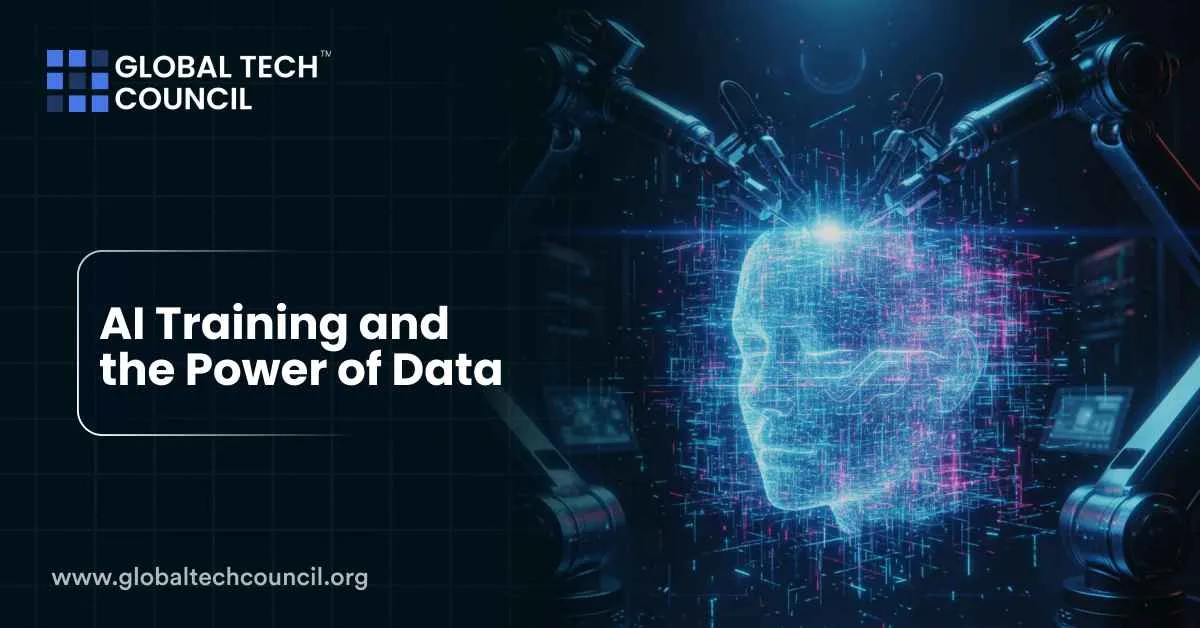
For professionals who want to build deeper expertise, learning paths like a Data Science Certification help connect theory with practice. By studying how data quality and volume influence training outcomes, learners can position themselves for careers that merge technical knowledge with responsible AI use.
Why Data Is the Core of AI Training
Every AI system, whether it is a chatbot or a medical imaging tool, learns by analyzing examples. This training process teaches the model to recognize patterns. If the examples are clear and accurate, the model becomes reliable. If the data is biased or noisy, the system produces weak or unfair results. This is why experts often call data the “fuel” of artificial Intelligence.
Quality Over Quantity
Large datasets are valuable, but quality matters even more. Clean, labeled, and well-structured data ensures that AI systems can generalize and respond accurately in real-world conditions. When poor-quality data is used, the model may fail or deliver biased results. Companies are now investing heavily in curation and annotation, not just data collection.
Data Volume and Diversity
Big models thrive on big data. They need examples from different contexts, languages, and scenarios to make accurate predictions. Diversity in data also helps reduce bias. However, despite the explosion of digital content worldwide, access to high-quality datasets is still a challenge. Many organizations now compete for proprietary data or explore data marketplaces to support their AI projects.
Synthetic Data and Its Limits
To address data shortages, many developers use synthetic data—artificially generated datasets created by AI itself. While this helps fill gaps, too much reliance on synthetic data can create a problem called model collapse. This happens when systems trained mostly on generated data lose originality and diversity, limiting their usefulness.
Data Preparation and Labeling
Raw data is rarely ready for use. It must be cleaned, labeled, and split into training, validation, and testing sets. Proper annotation helps models understand the meaning behind data points. Dividing data into different sets ensures that models are tested fairly and can perform on new, unseen information.
Key Data Principles in AI Training
| Data Principle | How It Works | Why It Matters |
| Data Quality | Clean, accurate, and well-labeled data supports training | Prevents errors, bias, and unreliable predictions |
| Data Quantity & Diversity | Large datasets from varied sources | Improves generalization and reduces unfair bias |
| Synthetic Data Balance | Combining synthetic and real data responsibly | Expands datasets while avoiding model collapse |
| Annotation & Splits | Labeling and dividing data into training, validation, and test sets | Ensures fair evaluation and strong model performance |
This table shows how data principles affect AI training outcomes and why organizations must balance size, quality, and structure.
Infrastructure and Environmental Costs
AI training requires significant computing power. Training large models consumes electricity and water, raising concerns about sustainability. Companies are now exploring more energy-efficient infrastructure and optimized algorithms to reduce environmental impact while still building capable AI systems.
Data as a Business Asset
As demand for AI grows, data itself is becoming a valuable commodity. Some organizations now monetize proprietary datasets or form partnerships to share resources. High-quality data is treated as intellectual property, critical for creating competitive AI products. This shift has also led to new regulations around data privacy and security.
Human Oversight and Ethical Data Use
Data can introduce hidden risks, such as bias or exclusion of minority groups. Ethical AI training requires careful data selection, fairness checks, and human oversight. Professionals working in this space benefit from learning about governance and ethical standards. Programs such as Deep tech certification visit the Blockchain Council provide insights into both technical and ethical aspects of building AI systems.
Practical Applications of Data in AI Training
| Application Area | Role of Data | Outcome |
| Healthcare AI | Medical images and patient records | Improves diagnosis, treatment recommendations, and predictive care |
| Finance AI | Transaction histories and market data | Enhances fraud detection and investment insights |
| Education AI | Student performance and behavior data | Personalizes learning and boosts engagement |
| Marketing AI | Consumer and sales data | Supports personalization, targeting, and trend analysis |
| Business Strategy | Proprietary datasets and analytics | Informs planning and improves decision-making |
This table highlights how different industries rely on the power of data to train AI systems that solve real-world problems.
Why Training with Data Matters for Professionals
The connection between data and AI success is direct: better data equals better results. For professionals, this means data literacy is no longer optional. Leaders, teachers, and business managers all need a working understanding of how AI depends on data. Programs such as the Marketing and Business Certification show how these concepts apply when AI is used in business growth and strategic planning.
Conclusion
AI training is only as strong as the data behind it. Clean, diverse, and well-structured data makes the difference between a reliable system and one that fails. Organizations must balance real and synthetic data, manage environmental impact, and ensure ethical practices. For individuals, learning more about how data shapes AI is a career advantage. Structured training and certifications give professionals the knowledge to use AI responsibly and effectively. In the end, the power of data is not just technical—it is the key to building trustworthy, human-centered AI.
Leave a Reply